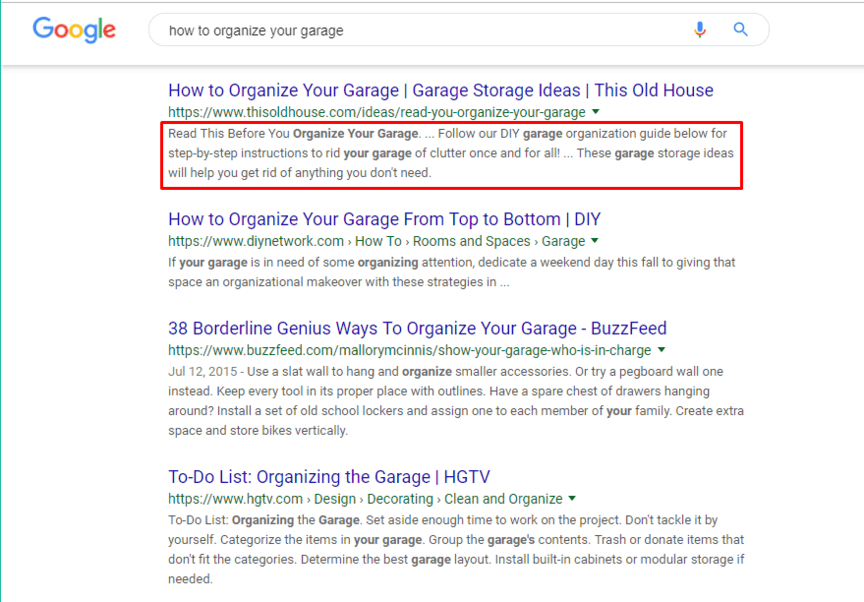Others
6 Tried-and-True Ways to Improve SEO on Google and Avoid Penalties
Here’s a great article from WebFX Blog
Getting your website to the top of search engine results pages (SERPs) is the mission of search engine optimization (SEO). It’s even better when you climb the rankings on the search engine that most of the world’s Internet users use — Google.
If your current SEO strategy isn’t making enough progress, you might need to pump some new life into it. Penalties that violate Google’s SEO principles might also be a barrier to higher rankings.
Need an SEO expert right away? Contact us online today or call us at 888-601-5359.
To improve SEO on Google, check out these six tried-and-true ways that maximize site traffic.
Improve SEO by avoiding sneaky SEO and Google penalties
Now that Google’s algorithms include machine learning and hundreds of ranking factors, it’s difficult to believe that people could ever trick the search engine into displaying their results with underhanded techniques.
However, black-hat SEO — or SEO that defies Google’s guidelines and sneaks through to the top rankings — has been around for a long time and still happens. Without reading Google’s Webmaster Guidelines, you might not even know you’re doing it.
Google is passionate about supplying the best results for users, and sneaky SEO tactics bypass the regular quality metrics and push better, qualified pages out of sight on the SERPs.
As Google has grown and honed its skills, it’s applied penalties to black hat SEO practices. Google penalties could kick you off the SERPs completely or plummet your page to the bottom.
You can see if your site has any penalties in the Google Search Console message center or Manual Actions report.
If you stick with SEO habits that Google frowns upon, your rankings won’t improve. Let’s go over the solutions and optimization activities you can perform to meet Google’s standards and skyrocket your rankings.
1. Reduce page load speed
Google approves of focusing on user experience, which means tweaking little things like page load speed to retain visitors on your site.
There are few things as frustrating as waiting for a slow page to appear. Page load speed — how much time it takes for your page to finish loading after a user clicks on it in the SERP — lets visitors enjoy your page as quickly as possible.
According to Google’s research, 53 percent of mobile site visitors abandon a page when it takes longer than three seconds to load, and when the loading stretches from one to five seconds, the probability of bouncing surges to 90 percent.
Most pages take longer than that to load, and shaving harmful seconds from your load time can improve SEO. Check the capability of your site host and switch to a better equipped one if they’re the source of your page load problem.
2. Genuinely earn backlinks
Backlinks — links to your page from other domains — nail down a site’s credibility for Google. It’s like a URL-based review that tells Google that other people care about your brand and products.
Earning backlinks the white hat SEO way is accomplished through networking, brand awareness, guest blogging, and asking for appropriate mentions.
Guest blogs that include a link to your business’s site can demonstrate authority and spread awareness of your services.
Unfortunately, shady link schemes have skewed search results in the past, so Google keeps a sharp lookout for questionable link building.
For example, people used to insert recognizable links in forums and comment sections to their pages to elevate their Google SEO. The setup — the anchor text and link optimization — all looked correct, but the site owner was promoting their site rather than an outside source.
Steer clear of the following taboo link schemes:
- Excessive purchasing, selling, contracting, and exchanging editorial backlinks
- Automating the whole process of backlinking (like computer generated link farms)
- Putting discreet links in footers, templates, and advertisements
3. Create informative title tags, meta descriptions, and anchor text
It’s crucial to stay consistent in explanations about your page, including title tags, meta descriptions, and anchor text. These signs you give to users also report vital details to Google’s crawlers.
As Google skims descriptions, help it understand the worth of your page with creative phrases and a decent amount of keyword density.
Google penalizes SEO that takes advantage of description opportunities to trick users. One case of this would be insincere redirects. Not all redirects aim to deceive, but those that do make for a terrible user experience.
If you click on a result that says it’s offering a how-to article for organizing your garage, you want it to follow through with its promise. Pass on useful, thorough descriptions so that visitors know what to expect.

In your efforts to improve SEO for Google, lay out helpful statements about your page. You can rise through the results because your page satisfies technical factors and effectively attracts people.
4. Include relevant, natural keywords
With SEO for Google, you target keywords to match users’ queries. As you sprinkle them in the body of the content, titles, links, and meta descriptions, it’s vital to place them naturally.
Google identifies stuffed and irrelevant keywords, which hinders you from sitting at the top of the results page. “Stuffed keywords” means repeating your keywords over and over again without context.
Irrelevant keywords don’t follow typical writing patterns and don’t fit into conversational copy. This isn’t appealing to visitors, because it fails to add helpful information to a topic.
To figure out how to rank higher on Google, you have to balance a healthy usage of keywords. Suitable keyword usage blends into relevant content.
For example, you can write, “Pet toys, the best pet toys for sale, buy pet toys, toys for your pets” in a meta description, but that’s nonsense. Instead, writing “Looking for fun pet toys? Here are the best pet toys we’ve found in stores” fills users in and naturally inserts your keywords.
5. Produce unique site content
If you’re wondering how to improve Google search ranking with content, the central idea is to make fresh, comprehensive blogs, how-to guides, industry news updates, and tutorials.
What doesn’t improve SEO on Google is copying other articles or scraping content — which means republishing existing content without significant changes.
SEO on Google works best when you come from a new angle with practical information that can help visitors and extend their knowledge about a topic.
Generate polished, beneficial content for your pages to drive up your presence on the search results and improve visibility through Google SEO.
6. Prioritize mobile optimization for Google
Mobile-friendly ranking factors got introduced to Google with the mobile-first indexing transformation. Formerly, Google indexed for desktop first. Now, non-mobile sites can sink in rankings.

Improve your SEO on Google by designing and optimizing for smartphones and tablets. The structure of a page looks entirely different from a smaller screen, so implement responsive design to accommodate many dimensions.
Scrolling on mobile devices is tricky, so make navigation smooth by considering touch-screen specific interactions. Mobile SEO optimization is a smart way to shoot ahead in the race for top Google rankings.
Improve Google SEO with WebFX
These tips can improve SEO for Google and keep you safe from unsightly penalties. Focus on Google’s values, like user experience, and you can win over traffic and produce revenue.
WebFX is a robust SEO agency with 200+ team members that can add expertise to your campaign. Our SEO services include analysis of your site, reporting, and keyword optimization that all leads to more conversions for you.
If you need SEO services, contact us online today or call us at 888-601-5359.
The post 6 Tried-and-True Ways to Improve SEO on Google and Avoid Penalties appeared first on WebFX Blog.

